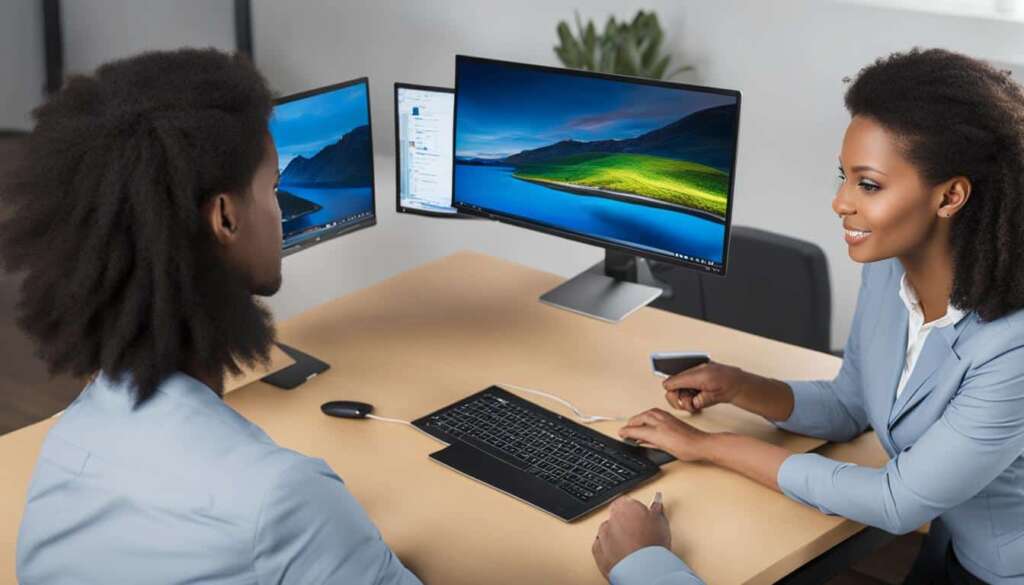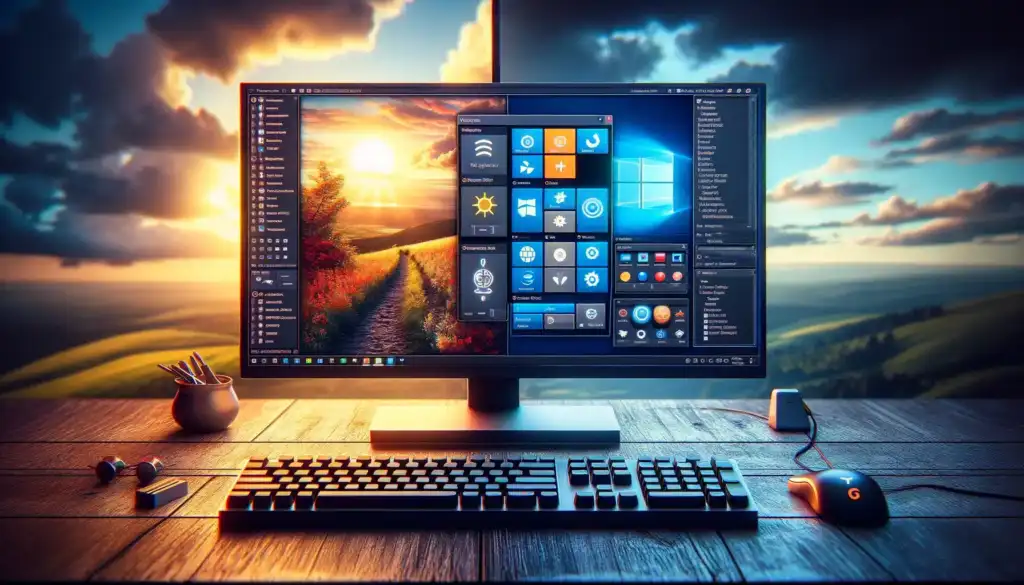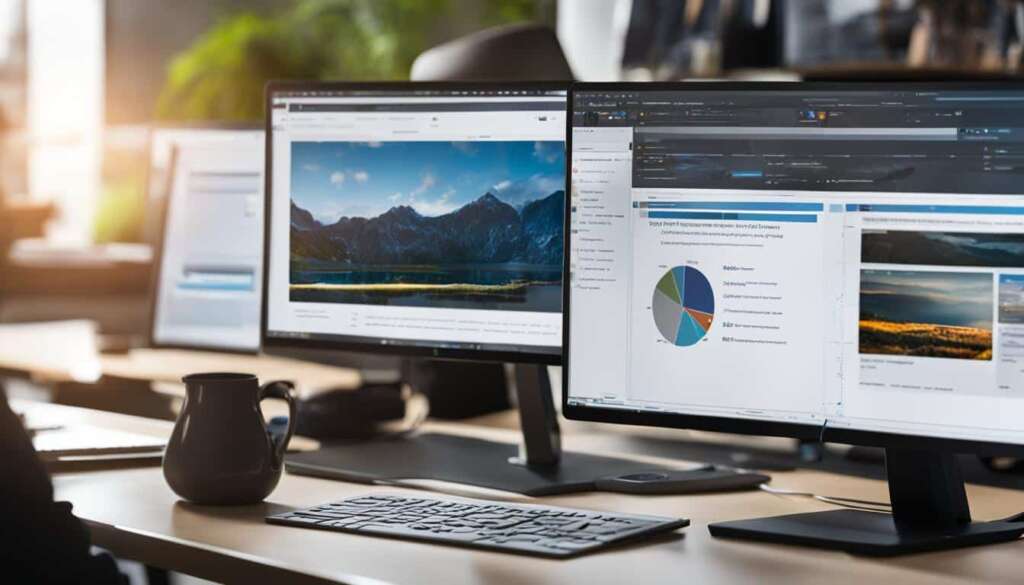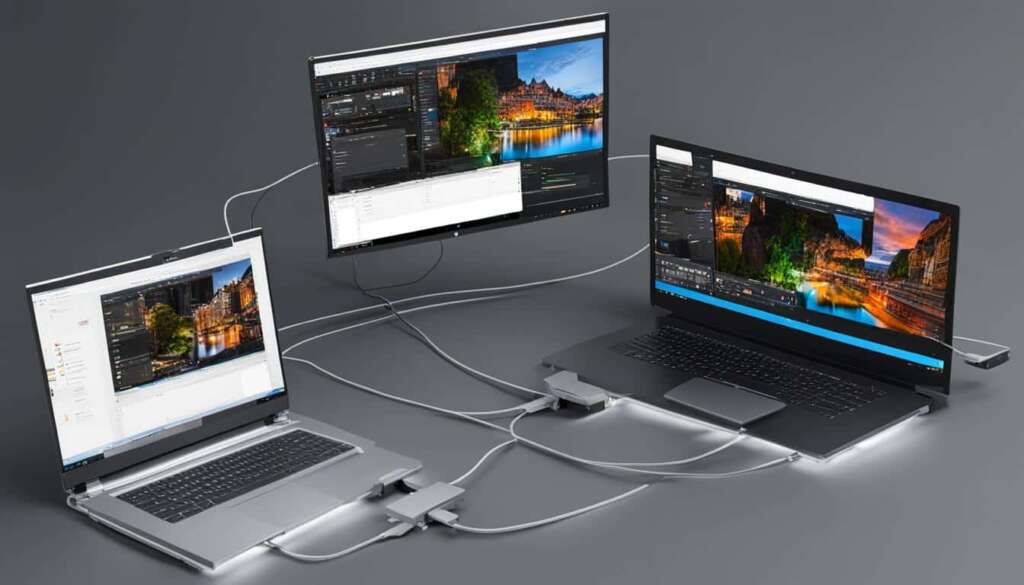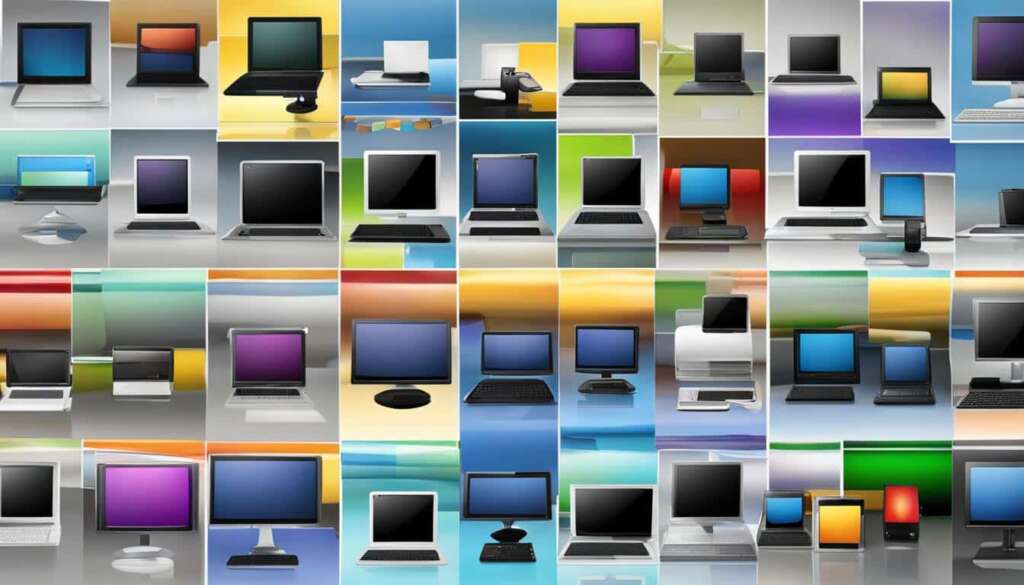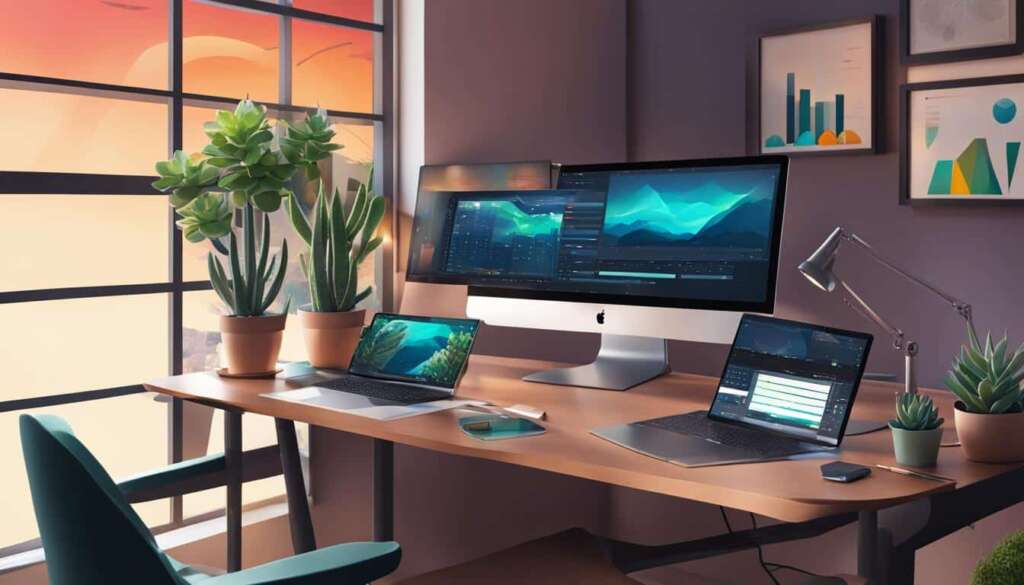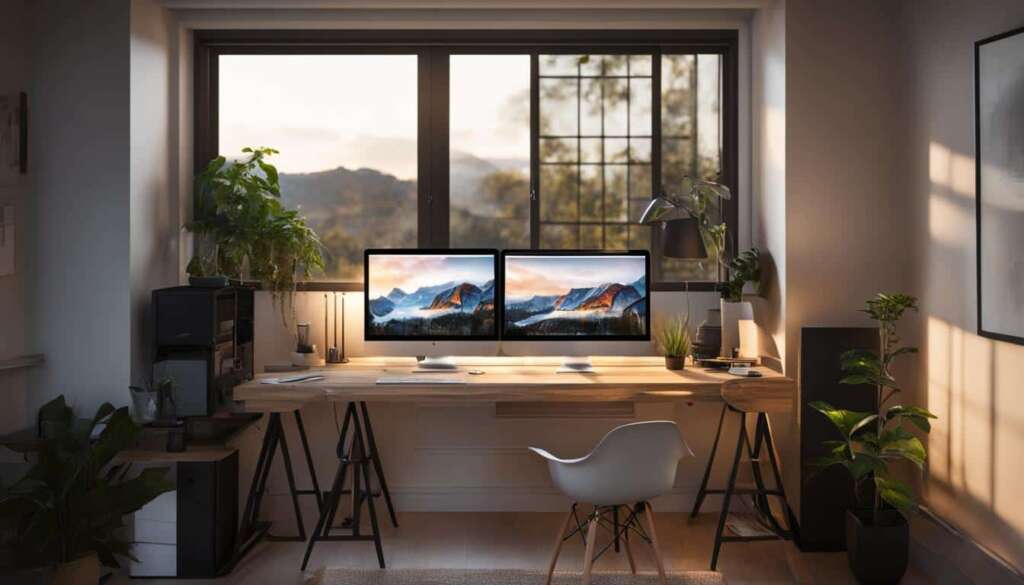Table of Contents
Looking to boost your productivity and expand your visual real estate? Using a laptop as a second monitor for your desktop computer could be the perfect solution for you. By leveraging the power of your laptop’s screen alongside your main display, you can create a dual-screen setup that enhances your workflow and efficiency.
In this comprehensive guide, we will show you how to use a laptop as a monitor for both Windows and macOS systems. Whether you’re a Windows user or a macOS enthusiast, we’ve got you covered. You’ll discover the requirements, steps, and benefits of setting up your laptop as a second screen, all in one place.
Why settle for a single monitor when you could have two? Let’s dive in and learn how to unlock the full potential of your laptop as a versatile secondary display. Get ready to revolutionize your workspace and take your productivity to new heights!
Using a Laptop as a Second Screen for a Windows Desktop
Expanding your display setup with a Windows laptop as a second screen for your Windows desktop is an excellent way to boost productivity and multitasking capabilities. By leveraging the built-in wireless display functionality in Windows and the Miracast streaming standard, you can easily set up a dual-screen environment without the need for cables or physical connections.
Before you begin, ensure that both your Windows laptop and desktop are running the same operating system version. Additionally, make sure that both devices are connected to the same Wi-Fi network to establish a wireless connection.
To harness the power of a Windows laptop as a second screen, follow these steps:
- On your Windows laptop, open the “Settings” app by clicking on the Start menu and selecting the gear icon.
- In the Settings app, navigate to the “System” category and click on “Display” in the left sidebar.
- Scroll down to the “Multiple displays” section and click on the “Connect to a wireless display” option.
- Your laptop will start searching for available wireless displays. Once your Windows desktop is detected, click on it to establish the connection.
Once the connection is established, your Windows laptop will function as a second screen for your desktop computer. You can now easily drag and arrange windows across both displays, enhancing your workflow and making multitasking a breeze.
Embrace the power of wireless display in Windows to transform your Windows laptop into a versatile second screen. With a seamless Miracast setup, you can enjoy the benefits of a dual-screen workstation, boosting your efficiency and overall computing experience.
Using a Laptop as a Second Screen for a macOS Desktop
If you’re using macOS, you can also use a laptop as a second screen for your desktop computer. macOS offers the AirPlay Display feature, which enables you to extend your workspace using a Mac or iPad as a second display. This feature works over both Wi-Fi and USB connections, giving you flexibility in choosing the setup that suits your needs. By ensuring that both devices are running macOS Monterey or later, signed into the same Apple ID account, and connected to the internet, you can easily configure your MacBook or iPad as a second display for your desktop Mac.
With AirPlay Display, the possibilities are endless. Whether you need more screen space to spread out your creative projects, view multiple documents side by side, or simply enjoy a larger workspace for multitasking, using a macOS laptop as a second screen provides the perfect solution.
To set up your macOS laptop as a second screen, follow these simple steps:
- Make sure both your desktop Mac and laptop are running macOS Monterey or a later version.
- Ensure that both devices are connected to the same Wi-Fi network or connected via USB.
- Sign in to the same Apple ID on both devices. This is crucial for the AirPlay Display feature to work seamlessly.
- On your desktop Mac, click on the Apple menu and select “System Preferences.”
- In the System Preferences window, click on “Displays.”
- You should see a “Arrangement” tab. Click on it.
- Check the box that says “Show mirroring options in the menu bar when available.”
- On your laptop, click on the AirPlay icon in the menu bar (it looks like a rectangle with an arrow).
- You should see your desktop Mac listed as an available display. Select it.
- Choose the display arrangement that suits your needs, whether you want to extend your desktop or mirror it. Adjust the resolution, brightness, and other settings as desired.
- Enjoy your extended workspace and take advantage of the seamless wireless streaming provided by AirPlay Display.
By utilizing the AirPlay Display feature, you can transform your macOS laptop into a powerful second screen for your desktop Mac, enhancing your productivity and facilitating smooth workflow management. Take advantage of this wireless streaming protocol to create a versatile and efficient work environment.
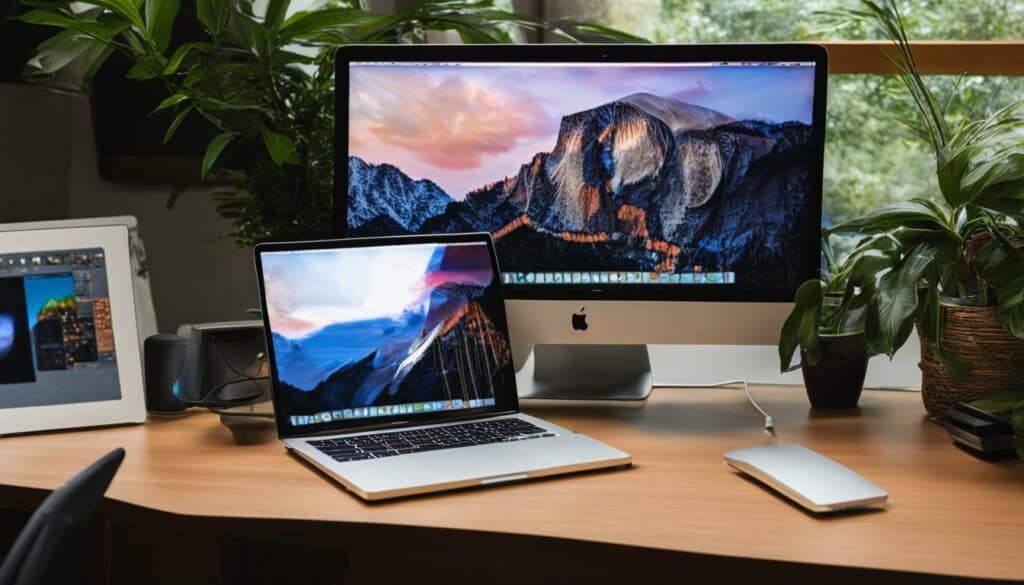
Configuring a Windows Laptop as a Second Display
To configure a Windows laptop as a second display for your main system, you need to adjust the projection settings on the laptop. This involves enabling the “Wireless Display” feature and customizing the security and pairing options to your preference. On the main computer, you can then access the display settings and connect to the laptop’s display wirelessly. By selecting the appropriate options and adjusting the audio output settings, you can extend your main display to the laptop screen, effectively using it as a second monitor.
Step-by-Step Guide: Configuring a Windows Laptop as a Second Display
Follow these steps to configure your Windows laptop as a second display:
- Ensure that both your laptop and main computer are connected to the same Wi-Fi network.
- On your Windows laptop, open the “Settings” app by clicking on the Start menu and selecting “Settings” (the gear icon).
- In the Settings menu, click on the “System” option.
- Under the “System” menu, select the “Projecting to this PC” tab on the left sidebar.
- Toggle the “Wireless Display” switch to the “On” position.
- Customize the security and pairing options according to your preference.
- On your main computer, press the Win + P keys simultaneously to open the “Project” menu.
- Select the “Connect to a wireless display” option.
- A list of available wireless displays will appear. Choose your Windows laptop from the list.
- Follow any additional prompts and authentication steps to establish the wireless connection.
- Once connected, you can adjust the display settings on your main computer to extend or duplicate the screen.
- Don’t forget to check the audio output settings to ensure that sound is directed to the laptop speakers.
With these steps, you can effortlessly configure your Windows laptop as a second display, giving you the freedom to expand your workspace and improve your multitasking capabilities.
| Advantages | Considerations |
|---|---|
|
|
Conclusion
Using a laptop as a monitor can greatly enhance your productivity by offering additional screen space for multitasking and streamlining your workflow. Whether you’re using a Windows or macOS system, the process of using a laptop as a second display is relatively straightforward and can be accomplished wirelessly. By following the steps outlined in this guide and adjusting the necessary settings on both devices, you can expand your display and fully harness the potential of your workspace.
There are numerous benefits to utilizing your laptop as a monitor. With the extra screen real estate, you can effortlessly manage multiple applications, compare documents side by side, and improve your efficiency. Having a second monitor can enhance your work or personal tasks, such as video editing, coding, research, or even simply browsing the internet.
Whether you’re a professional or a student, the flexibility of using a laptop as a monitor offers convenience and versatility. You can easily transition between working on the go or in a fixed location without compromising your productivity. Empower yourself by taking advantage of this setup and unlock new possibilities for achieving seamless multitasking in your daily routine.
FAQ
Can I use a laptop as a second monitor?
Yes, you can use a laptop as a second monitor for your desktop computer. This can be done wirelessly or through cables, depending on the operating system.
How do I use a Windows laptop as a second screen for a Windows desktop?
To use a Windows laptop as a second screen, both devices should be running the same operating system. You can connect them wirelessly using the Miracast streaming standard and ensure that they are connected to the same Wi-Fi network.
Can I use a macOS laptop as a second screen for my desktop computer?
Yes, you can use a macOS laptop as a second screen for your desktop. macOS offers the AirPlay Display feature, which allows you to extend your workspace using a Mac or an iPad as a second display.
How do I configure a Windows laptop as a second display for my main system?
To configure a Windows laptop as a second display, you need to adjust the projection settings on the laptop. Enable the “Wireless Display” feature and customize the security and pairing options. On the main computer, access the display settings and connect to the laptop’s display wirelessly.
What are the benefits of using a laptop as a monitor?
Using a laptop as a monitor expands your visual real estate, allowing you to maximize productivity and multitask efficiently. It provides additional screen space for organizing your workflow and enhancing your overall workspace.

